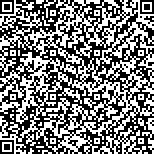| 引用本文: |
巫继皇, 齐红梅, 陈辉, 王志明, 章伟, 郭建军.赤凤迎源针刺法对面神经损伤模型大鼠Ras/MEK/ERK信号通路的影响[J].湖南中医药大学学报,2024,44(7):1277-1285[点击复制] |
|
| |
|
|
| 本文已被:浏览 1384次 下载 700次 |
| 赤凤迎源针刺法对面神经损伤模型大鼠Ras/MEK/ERK信号通路的影响 |
| 巫继皇,齐红梅,陈辉,王志明,章伟,郭建军 |
| (湖南中医药大学, 湖南 长沙 410208;湖南省中西医结合医院, 湖南 长沙 410006) |
| 摘要: |
| 目的 探讨赤凤迎源针刺法对面神经超微结构、丝裂原活化的细胞外信号调节激酶(mitogen-activated extracellular signal-regulated kinase, MEK)、细胞外信号调节蛋白激酶(extracellular signal-regulated kinase, ERK)及血清KRas蛋白表达的影响。方法 将SD大鼠随机分为空白对照组、模型组、常规针刺组、赤凤迎源针刺组,每组8只。除空白对照组大鼠正常饲养外,其他各组大鼠用面神经颊支压榨法诱导面神经损伤模型。造模成功后,予以干预2周。干预结束后,行电镜检查观察大鼠的面神经超微结构;通过HE染色观察面神经组织形态组织学变化;ELISA法检测血清KRas的表达水平;Western blot检测面神经组织MEK、ERK蛋白的表达水平。结果 造模后,与空白对照组比较,另外3组大鼠动物行为学评分均明显升高(P<0.01)。针刺2周后,常规针刺组及赤凤迎源针刺组大鼠评分明显低于模型组(P<0.01),且赤凤迎源针刺组评分低于常规针刺组(P<0.01)。针刺2周后,与模型组对比,常规针刺组及赤凤迎源针刺组面神经轴突纤维排列较紧密,内质网较多,KRas蛋白表达明显升高(P<0.05),面神经MEK蛋白、ERK蛋白表达升高(P<0.05),且赤凤迎源针刺组均高于常规针刺组(P<0.05)。结论 赤凤迎源针刺法可改善面神经损伤模型大鼠动物行为学,上调KRas、MEK及ERK表达水平,可能与激活Ras/MEK/ERK信号通路有关,从而修复面神经损伤。 |
| 关键词: 面神经损伤 赤凤迎源 大鼠 KRas蛋白 MEK蛋白 ERK蛋白 |
| DOI:10.3969/j.issn.1674-070X.2024.07.019 |
| 投稿时间:2023-12-26 |
| 基金项目:湖南省中医药科研计划一般课题项目(D2022034);湖南省中医药研究院院级课题项目(202122)。 |
|
| Effects of Chifeng Yingyuan acupuncture method on Ras/MEK/ERK signaling pathway in a rat model of facial nerve injury |
| WU Jihuang, QI Hongmei, CHEN Hui, WANG Zhiming, ZHANG Wei, GUO Jianjun |
| (Hunan University of Chinese Medicine, Changsha, Hunan 410208, China;Hunan Provincial Hospital of Integrated Chinese and Western Medicine, Changsha, Hunan 410006, China) |
| Abstract: |
| Objective To investigate the effects of the Chifeng Yingyuan acupuncture method on the ultra microstructure of facial nerves, mitogen-activated extracellular signal-regulated kinase (MEK), extracellular signal-regulated kinase (ERK), and serum KRas protein expressions. Methods SD rats were randomized into blank control, model, conventional acupuncture, and Chifeng Yingyuan acupuncture groups, with eight rats in each group. Except for the rats in the blank control group, which were raised normally, other groups of rats were induced with facial nerve injury models using the facial nerve buccal branch pressing method. After successful modeling, intervention was given for two weeks. After intervention, electron microscopy was performed to observe the ultra microstructure of the facial nerve in rats; HE staining was employed to observe the morphological and histological changes of facial nerve tissues; ELISA was used to determine the expression level of serum KRas; Western blot was applied to examine the expression levels of MEK and ERK proteins in facial nerve tissues. Results After modeling, compared with the blank control group, the behavioral scores of the other three groups of rats significantly increased (P<0.01). After two weeks of acupuncture treatment, the scores of rats in the conventional acupuncture and the Chifeng Yingyuan acupuncture groups were significantly lower than those in the model group (P<0.01), and the scores in the Chifeng Yingyuan acupuncture group were lower than those in the conventional acupuncture group (P<0.01). After two weeks of acupuncture treatment, compared with the model group, the conventional acupuncture and the Chifeng Yingyuan acupuncture groups had a tighter arrangement of facial nerve axon fibers, more endoplasmic reticulum, and a significant increase in KRas protein expression (P<0.05). The expression of facial nerve MEK protein and ERK protein increased (P<0.05), and the expression levels of these three proteins (KRas, MEK, and ERK) in the Chifeng Yingyuan acupuncture group were higher than in the conventional acupuncture group (P<0.05). Conclusion The Chifeng Yingyuan acupuncture method can improve the behavioral outcomes of the rat model of facial nerve injury and upregulate the expression levels of KRas, MEK, and ERK, which may be related to the activation of the Ras/MEK/ERK signaling pathway, thereby repairing facial nerve injury. |
| Key words: facial nerve injury Chifeng Yingyuan rats KRas protein mitogen-activated extracellular signal-regulated kinase protein extracellular signal-regulated kinase protein |
|

二维码(扫一下试试看!) |
|
|
|
|




